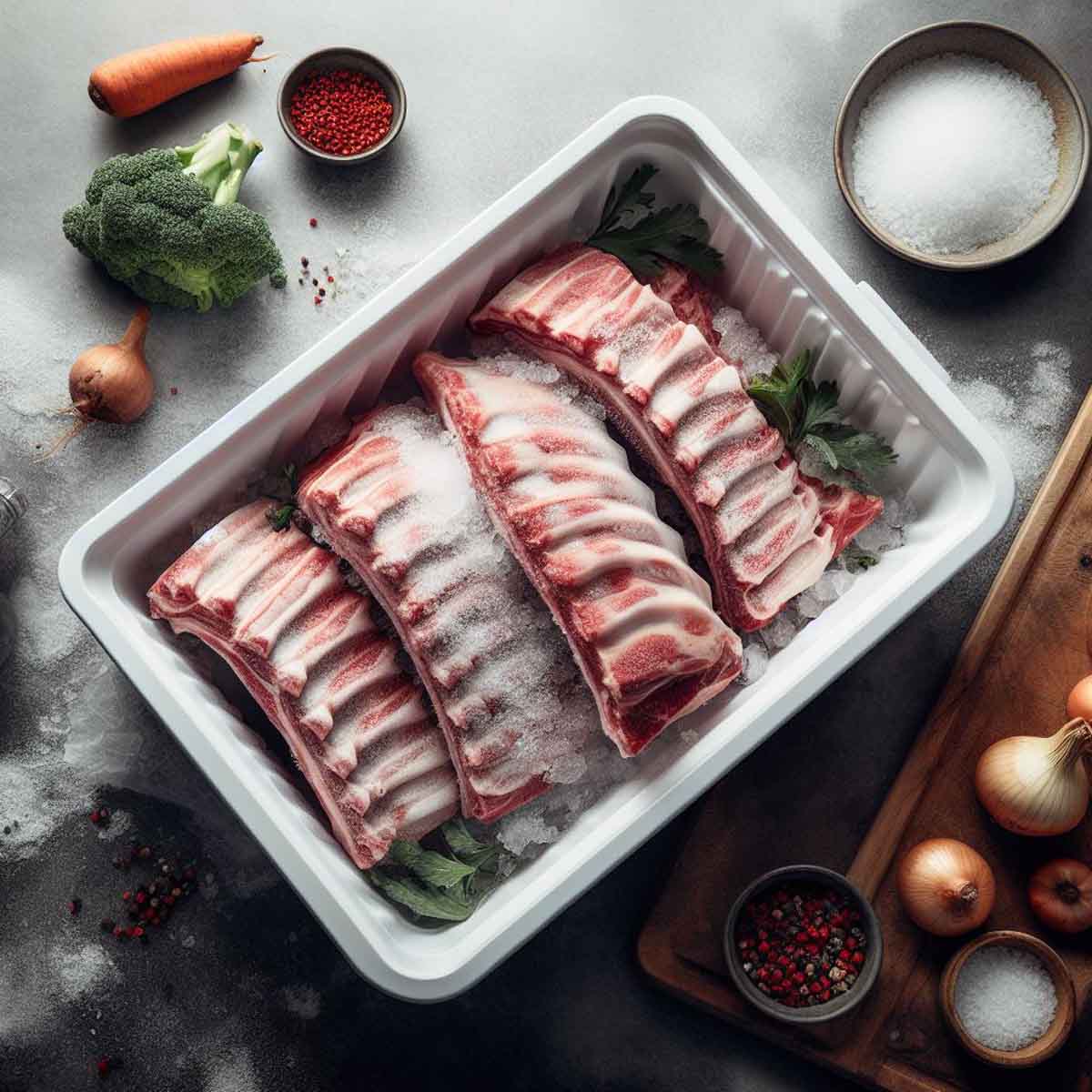Hello, rib lovers! Have you ever found yourself with too many racks of ribs on hand, fretting over waste? Or perhaps you’re planning to jump on a great sale at your local butcher? Either way, freezing ribs can be your ticket to savoring those succulent cuts long after you’ve brought them home.
By the end of this guide you’ll be able to lock in that mouth-watering taste and freshness for when you’re ready to feast.
Table of Contents
Quick Answer: Freezing Ribs Duration Overview
Before we jump into the nitty-gritty of freezing ribs, let’s cut right to the chase. How long can you freeze ribs without compromising quality? The quick answer is: raw pork ribs can be frozen for up to six months, while cooked ribs are best consumed within three to four months. But remember, this is just a general rule of thumb, and several factors can influence these durations.
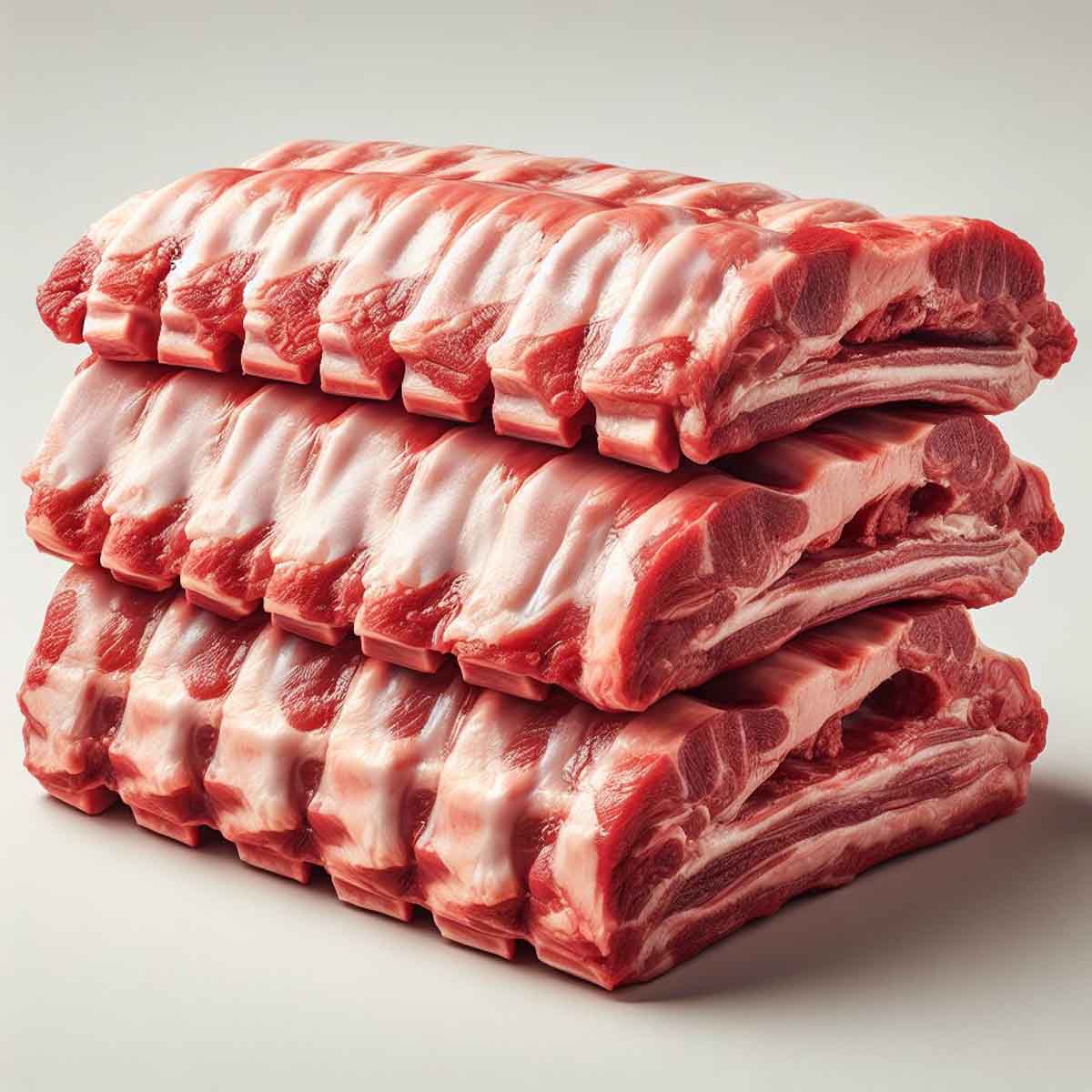
Why Freezing Ribs Is a Smart Choice
By preserving them in your freezer, ribs can become a convenient and delicious meal option at the ready. Freezing not only extends the ribs’ shelf life but also maintains the rich flavors and tenderness that rib enthusiasts cherish. Picture this: you, firing up the grill or oven whenever the mood strikes, pulling out ribs that taste as fresh as the day they were bought. Now that’s what we call smart cooking!
Types of Ribs: Pork, Beef, and Beyond
Before you consider freezing those ribs, let’s break down the different types available and any freezing quirks they may have:
Pork Ribs:
- Baby Back Ribs: Renowned for their tender meat, baby back ribs take well to freezing, especially when packaged properly.
- Spare Ribs: These robust and meaty ribs can handle the deep freeze convincingly, retaining their succulence.
- St. Louis Style Ribs: Cut from spare ribs to create a uniform shape, they freeze beautifully.
Beef Ribs:
- Generally larger than pork ribs, beef ribs require a bit more space in the freezer, but their rich flavor and texture remain intact when frozen.
- Short Ribs: Their marbled texture fares well in the freezer, especially when vacuum-sealed.
Lamb Ribs:
- Not as common, yet truly delectable, lamb ribs can become even more tender post-freeze. Just ensure they’re wrapped tightly to preserve quality.
Freezing Considerations:
- Each type of rib may come with its sell-by date, so freeze them as soon as possible for the best quality later on.
- A large bowl of marinated ribs can be portioned into meal-sized batches before freezing, ensuring you thaw only what you need when the time comes.
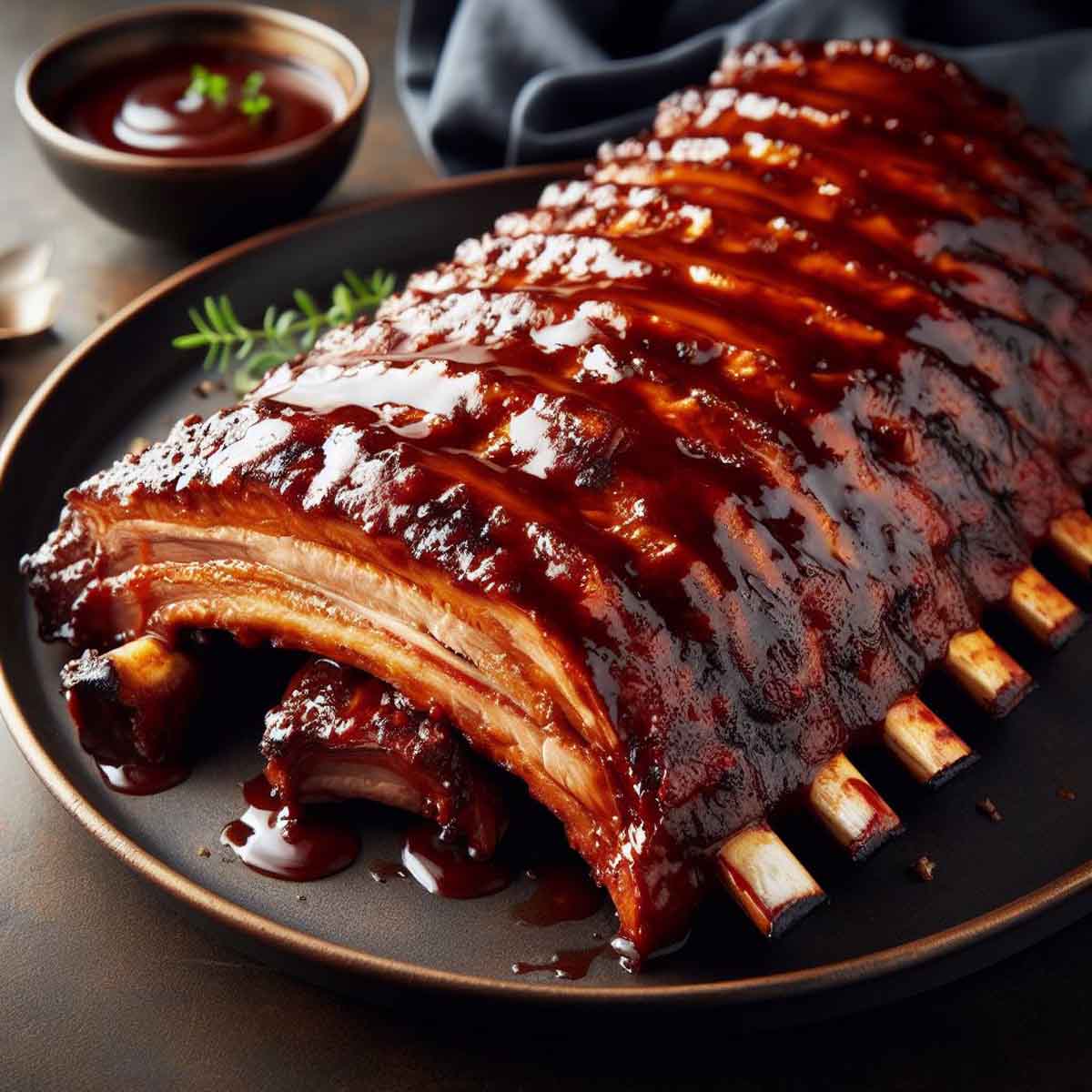
How Long Can You Freeze Ribs Before They Lose Their Magic?
It’s like a magic trick to have ribs come out of the freezer as delicious as they went in! To maintain that spellbinding quality, let’s dive into determining how long you can freeze these cuts of meat.
Duration Details: Freezing Raw vs. Cooked Ribs
The clock ticks differently for raw and cooked ribs. While raw pork ribs keep their charm in the freezer for up to six months, cooked ribs tend to lose their luster a bit sooner, ideally being eaten within three to four months. The U.S. Department of Agriculture (USDA) reassures us that food stored constantly at 0 °F will always be safe, though the quality may decline over time (Freezing and Food Safety).
Factors Impacting Optimal Storage Time
Several factors can affect how long ribs stay in prime condition when frozen:
- Temperature Stability: Maintaining a constant temperature of 0 °F is key. Freezer fluctuation can cause freezer burn and alter taste.
- Packaging: Proper packaging is crucial. Wrapping your ribs in plastic wraps, heavy-duty foil, or freezer bags can help maintain quality and combat freezer burn—a condition that doesn’t make the ribs unsafe but can deteriorate their quality (Freezing and Food Safety).
- Thawing and Refreezing: Each time ribs are thawed, especially in the danger zone for temperature, the clock on freshness resets. However, if you thaw ribs in the refrigerator, they can be safely refrozen, although quality may be compromised (Freezing and Food Safety).
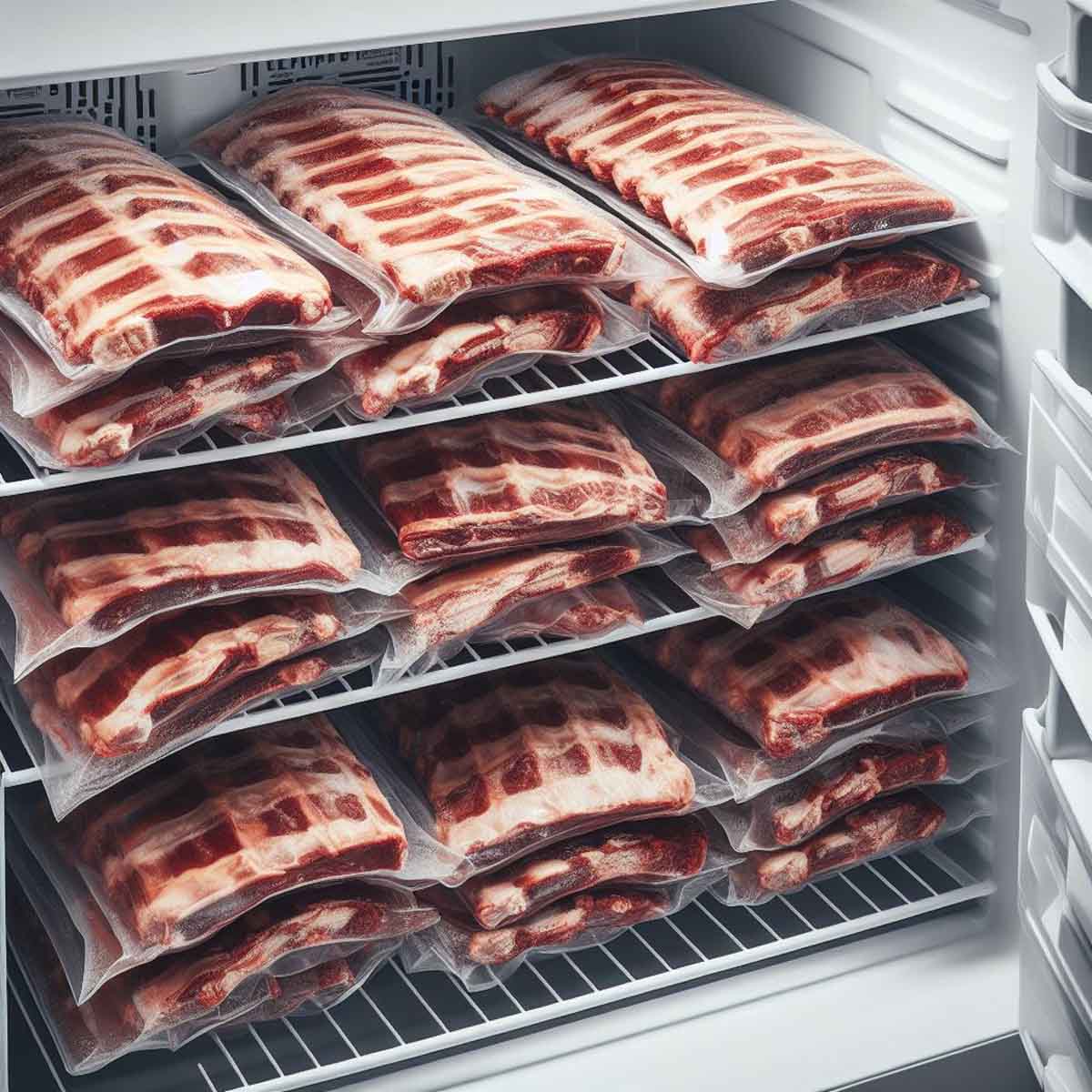
Efficient Freezing Tips for Ultimate Flavor Retention
Freezing is not just about preservation, but also about maximizing that much-loved rib flavor when it’s time to thaw. Here’s how to get it right:
Preparing and Freezing Raw vs. Cooked Ribs
When it comes to raw and cooked ribs, each has its nuances for freezing:
Raw Ribs:
- Freezing raw ribs allows for a longer shelf life and gives you a fresh start once thawed.
- Trimming excess fat and removing the membrane on the underside gives you the best results post-freeze.
Cooked Ribs:
Round two, anyone? When it comes to leftovers, ribs can take a curtain call in the freeze show:
- Cool Properly: Cooked ribs, ideally, should be cooled to room temperature in a short time—this minimizes bacterial growth and maintains the quality of the meat. It also helps avoid condensation that could lead to freezer burn.
- They can be a great way to enjoy a delicious meal with much less prep time once defrosted.
- Store Securely: Wrap your leftovers securely, pushing out as much air as possible, and seal them up tightly.
- Consume Timely: Aim to enjoy leftover ribs within 2 to 3 months for that just-grilled taste.
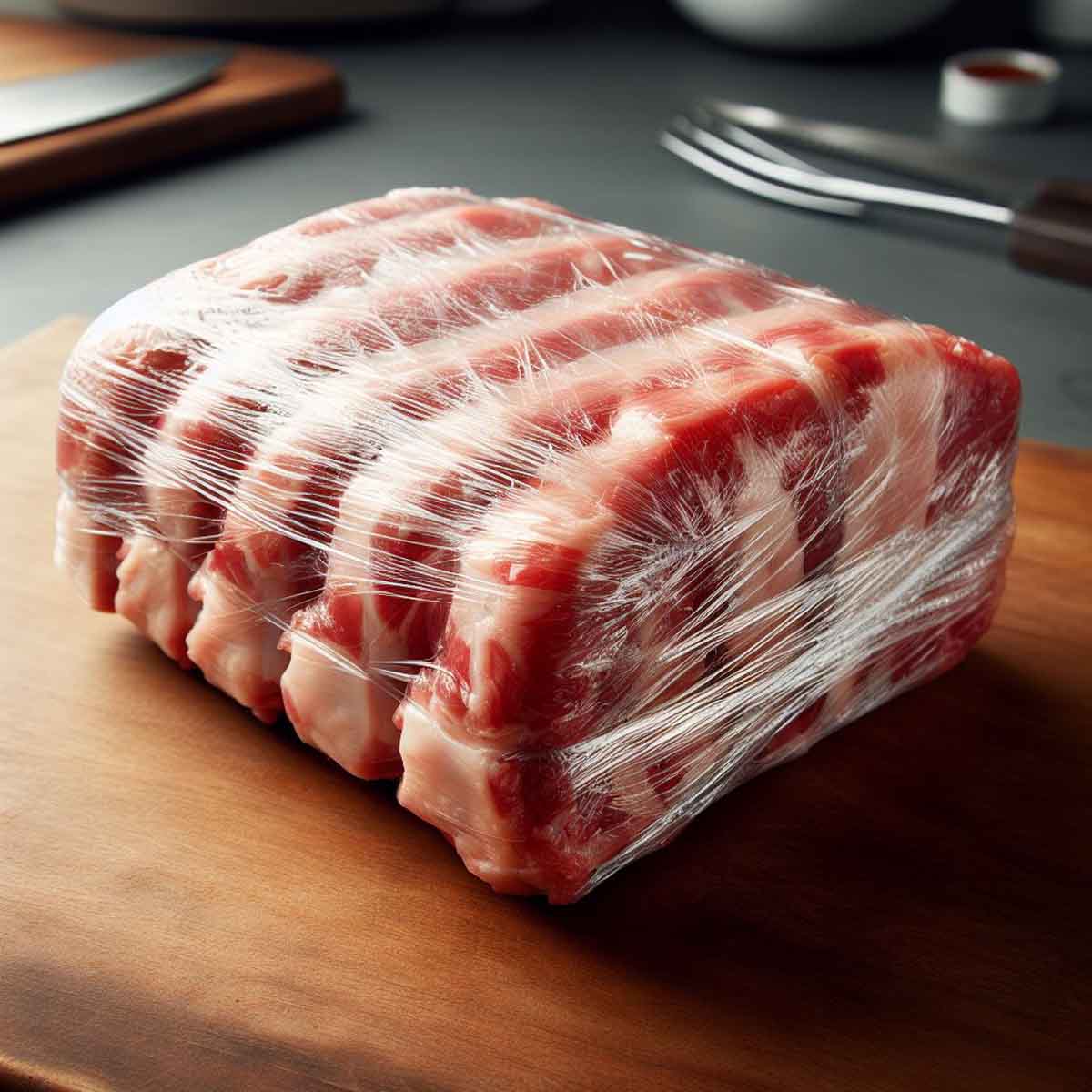
Preparation Steps:
- Clean the ribs by removing any debris or leftover blood.
- Pat them dry with paper towels to remove excess moisture.
- Season or marinate the ribs if desired—bbq sauce, a dry rub, or simply salt and pepper can all add flavor.
- Cut the ribs into a manageable size or portion them for specific meals.
Savor the Flavor: Seasoning Ribs Pre-Freezing
Season your ribs before freezing to infuse flavors that penetrate deep into the meat. Whether you go for a simple salt and pepper rub, a spicy blend, or smother them in your favorite barbecue sauce, seasoning prior to freezing can make a big difference.
Enzyme activity may continue at a slow pace even when the food is frozen, so this pre-freezing trick ensures ribs are ready to cook and enjoy with full flavor intact (Freezing and Food Safety).
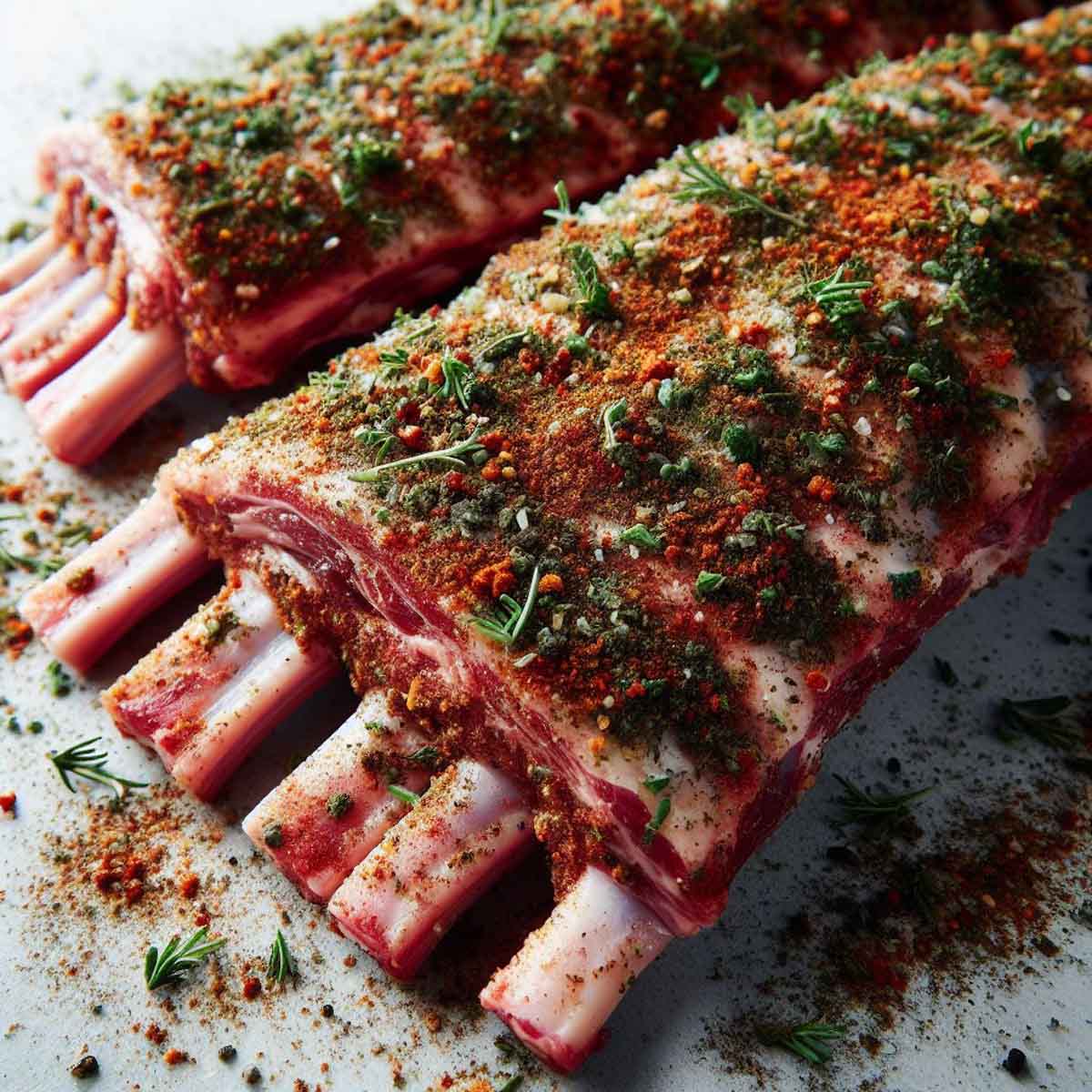
Wrapping It Right: Securing Ribs for Storage
You’ve probably asked yourself, should I keep the ribs in their original packaging? The answer is for short-term freezing, yes, it’s fine. For long-term, though, ribs benefit from an extra layer of protection. Wrapping them in heavy-duty aluminum foil or plastic wrap then placing them in a freezer bag best prevents air from getting in and drying them out. Bonus tip: sucking out as much air as possible from freezer bags preserves rid quality and wards off unwanted freezer burn (Freezing and Food Safety).
Packaging Methods: Ensuring Best Quality
Packaging plays a pivotal role in maintaining the ribs’ best quality during their freezer stay:
- Vacuum Sealing: This is arguably the best method for long-term storage. Removing as much air as possible keeps freezer burn at bay and locks in freshness.
- Freezer Bags: Heavy-duty freezer bags are a good idea for a solid freezing option. Try to squeeze out as much air before sealing.
- Wrapping: Freezer paper or heavy-duty aluminum foil can offer extra protection before placing the ribs in a bag.
How to Wrap Ribs for Freezing:
- Lay out a large piece of aluminum foil or plastic wrap.
- Place the ribs in the center.
- If you’ve seasoned the ribs, make sure they’re coated evenly.
- Wrap the ribs tightly, ensuring no part is exposed.
- Place the wrapped ribs in a freezer bag, suck out air (a straw can help), and seal tightly.
- Label and date the bag before placing it in the freezer.
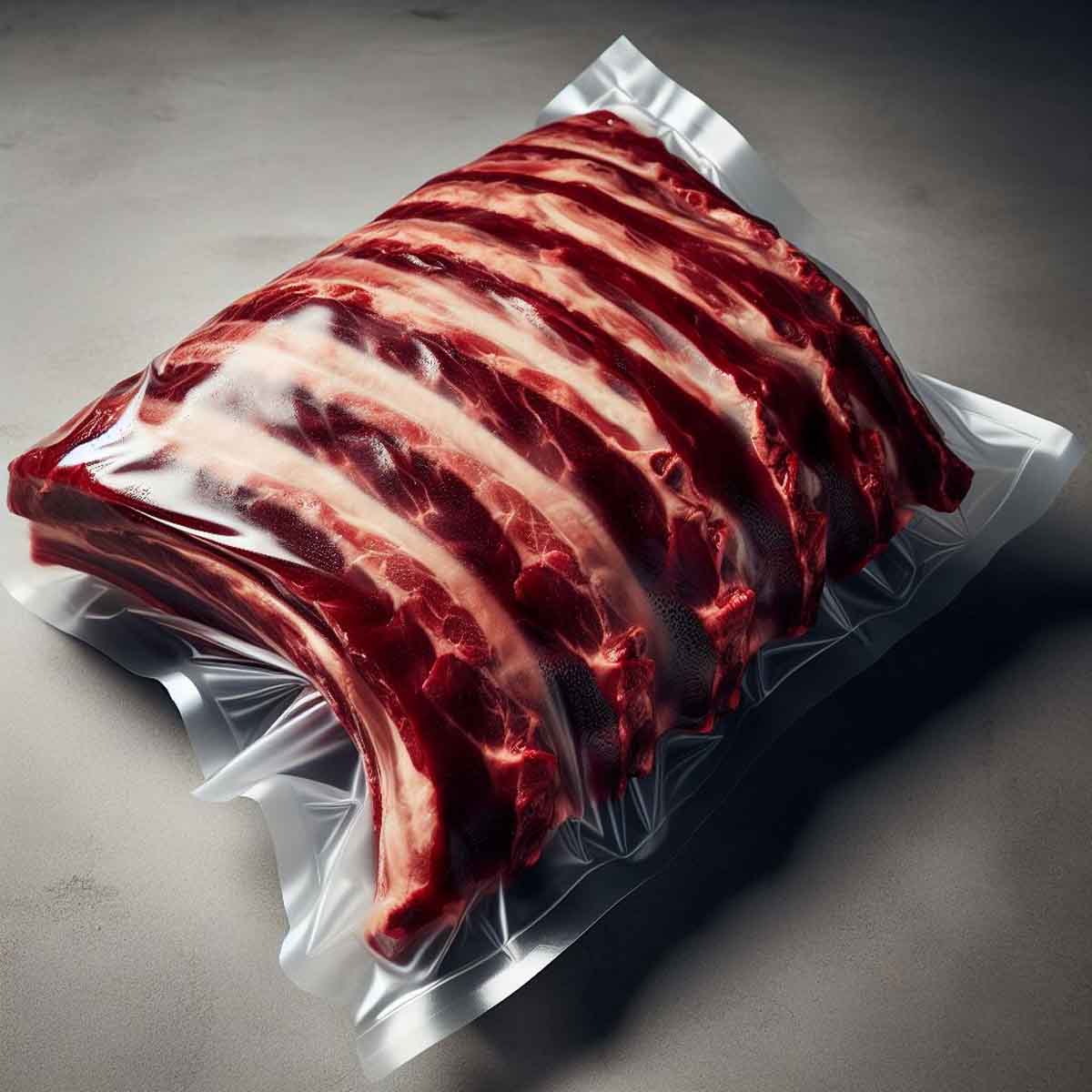
Labeling & Dating: Don’t Lose Track of Time
Labeling your ribs with the date of freezing is like leaving a breadcrumb trail back to the peak freshness of your meat. It’s a convenient reminder of their “best by” timeline, helping you avoid guesswork and preventing unnecessary waste.
Storing Your Ribs the Right Way
Now to the storage itself. The positioning of your ribs in the freezer plays a crucial role in their preservation. Ribs should be placed flat in the freezer where the temperature is most consistent, and away from the door to avoid any temperature fluctuations from frequent opening and closing. Remember, rapid freezing is the way to go for meat, as it prevents large ice crystals that can ruin the texture of your ribs upon thawing (Freezing and Food Safety).
Thawing Your Treasures
Getting ribs from the frosty depths of your freezer to the welcoming warmth of your grill requires a touch of care. Here’s how to thaw them safely:
How to Safely Thaw Frozen Ribs
Proper thawing methods are the trusty sidekicks of freezing. According to the USDA, the safest ways to thaw ribs include in the refrigerator, in cold water, or in the microwave (Freezing and Food Safety). Each approach ensures that ribs never enter the “danger zone” (40 °F – 140 °F) where bacteria can throw a party, potentially spoiling your meat.
Refrigerator Thawing:
- Transfer the ribs from the freezer to the fridge.
- It might take a good day or two for your ribs to thaw fully.
- Once thawed, the ribs should be cooked within 3 to 4 days.
Cold Water Thawing:
- Submerge the ribs in their airtight packaging in cold water.
- Change the water every 30 minutes to keep it cold.
- Expect your ribs to be ready for cooking in a few hours, depending on their size.
Microwave Thawing:
- It’s the speedy route if you’re short on time.
- Use your microwave’s “defrost” setting, following the manufacturer’s guidelines.
- Cook the ribs immediately after thawing, as some areas may become warm and start to cook during this process.
Make sure to read my guide about how to make delicious frozen ribs in oven.
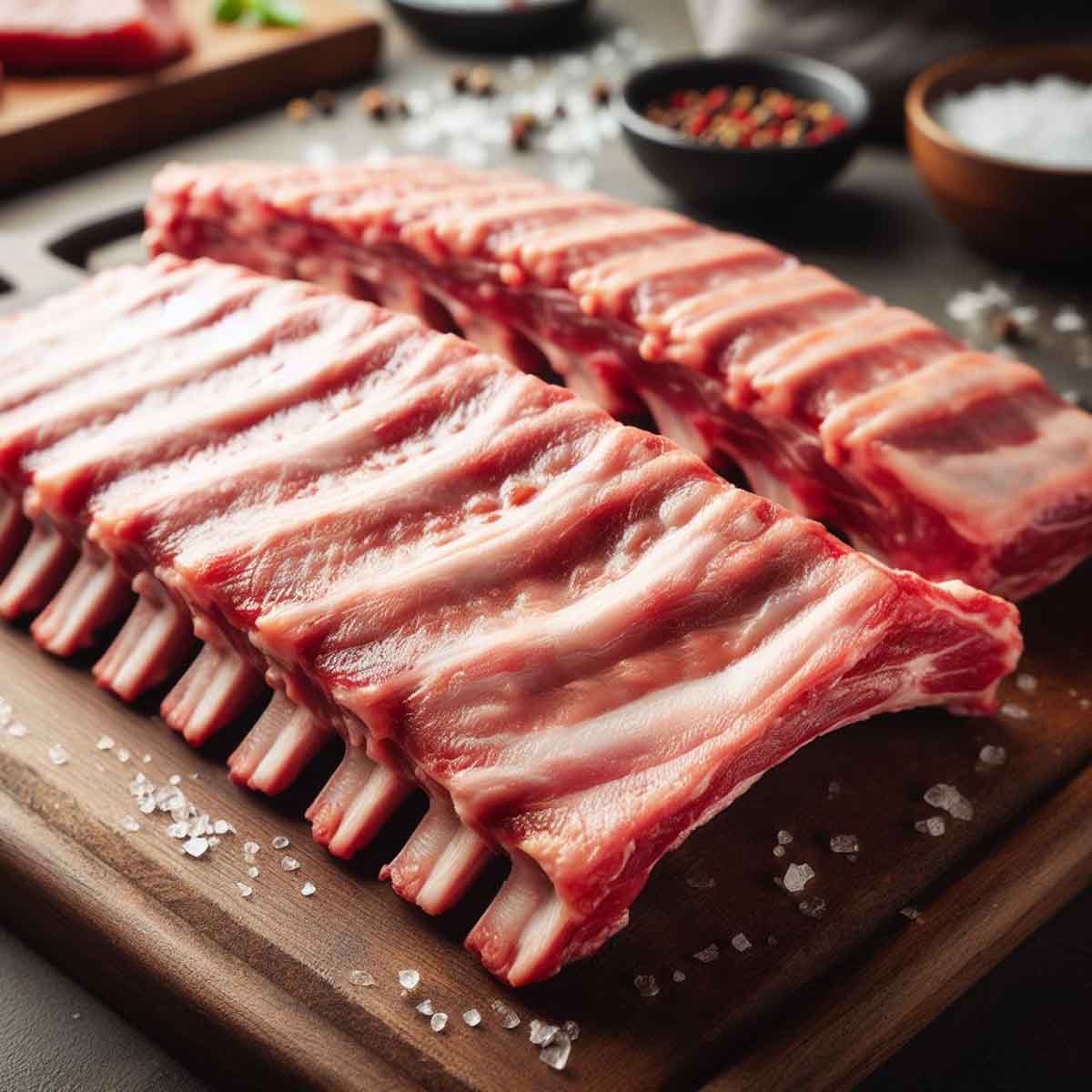
Impact on Taste and Texture
Concerned about losing that delectable rib flavor or having them turn into a chewy mess post-freeze? Fear not. The freezing process alone does not destroy the nutrients or flavor in meat and poultry (Freezing and Food Safety). However, the thawing process is where you want to tread lightly. Gentle and even thawing, like what you get in the fridge, helps maintain the texture and taste integrity. Quick-methods, although safe, might slightly affect the texture due to quick temperature changes.
Health and Safety: Freezing with Care
Freezing ribs is not just about preserving taste—it’s also about safety:
- Avoiding Bacterial Growth: Freezing below 0°F effectively puts microbes on ice, though they can awaken once thawed (Freezing and Food Safety).
- Temperature Consistency: A constant low temperature is essential for preventing bacteria from developing that sour smell or creating a slimy texture—signs your meat is going bad.
Answering Your Burning Questions
Got a smoking question about freezing ribs? Let’s turn up the heat and address some FAQs:
- Can you freeze dry rub ribs? Absolutely! Freezing ribs with a dry rub can enhance flavors once thawed and cooked.
- Can you freeze cooked ribs? You bet. Slather on your favorite sauce or dry rub before freezing to lock in moisture and flavor.
- How long do ribs last in the fridge? Once thawed, ribs should be consumed within 3 to 4 days for peak freshness.
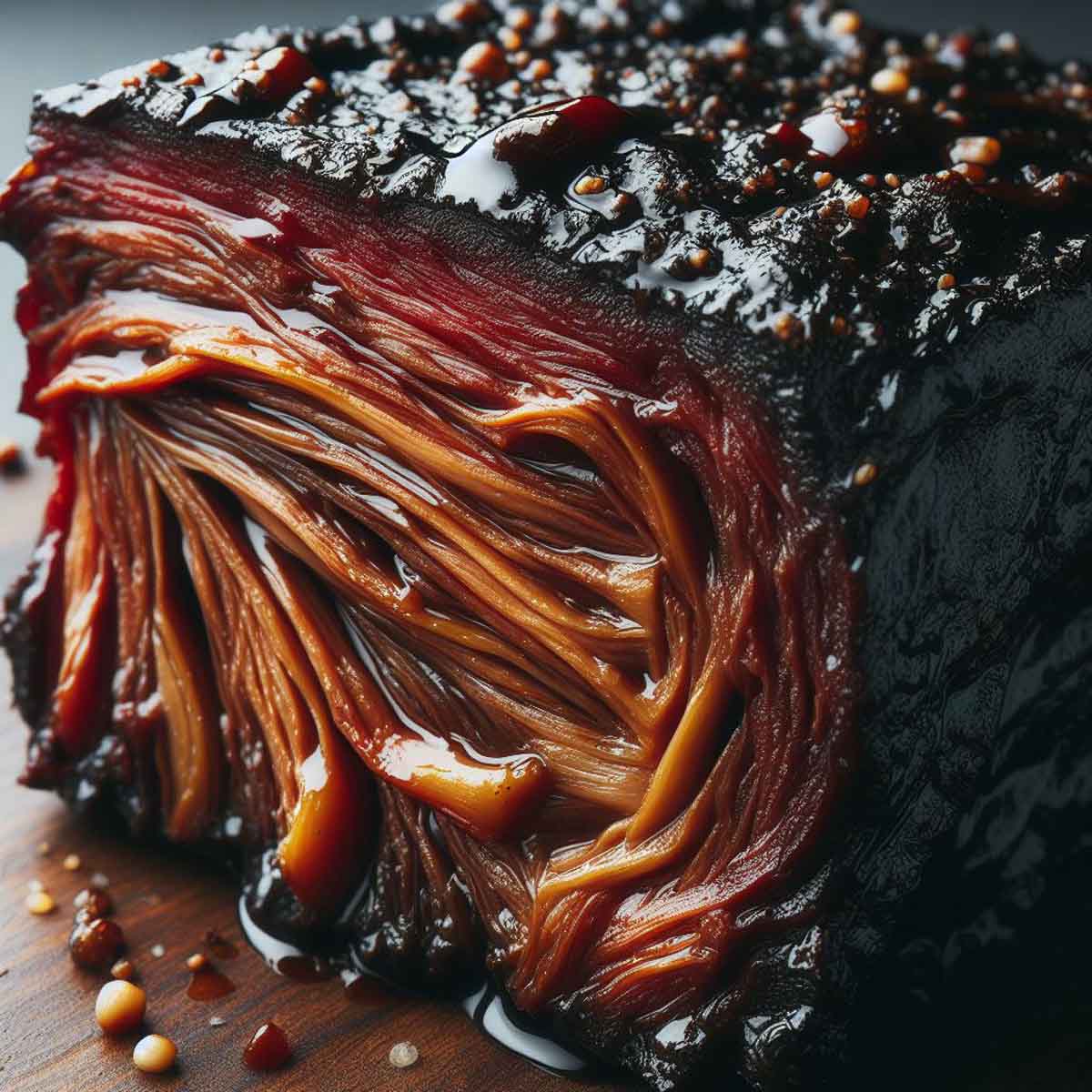
Cooking Tips Post-Thawing
Thawing is only part of the journey. Cooking your ribs just right is what leads to that ultimate taste extravaganza. Here’s how to ensure your thawed ribs are a hit:
- Allow Them to Reach Room Temperature: Before cooking, let the ribs rest out of the fridge until they reach room temperature. This helps ensure even cooking.
- Cook Thoroughly: Since the texture can be slightly affected by the freezing process, make sure your ribs reach the recommended internal temperature to secure juiciness and tenderness. And remember, frozen foods will usually take about 1.5 times longer to cook (Freezing and Food Safety).
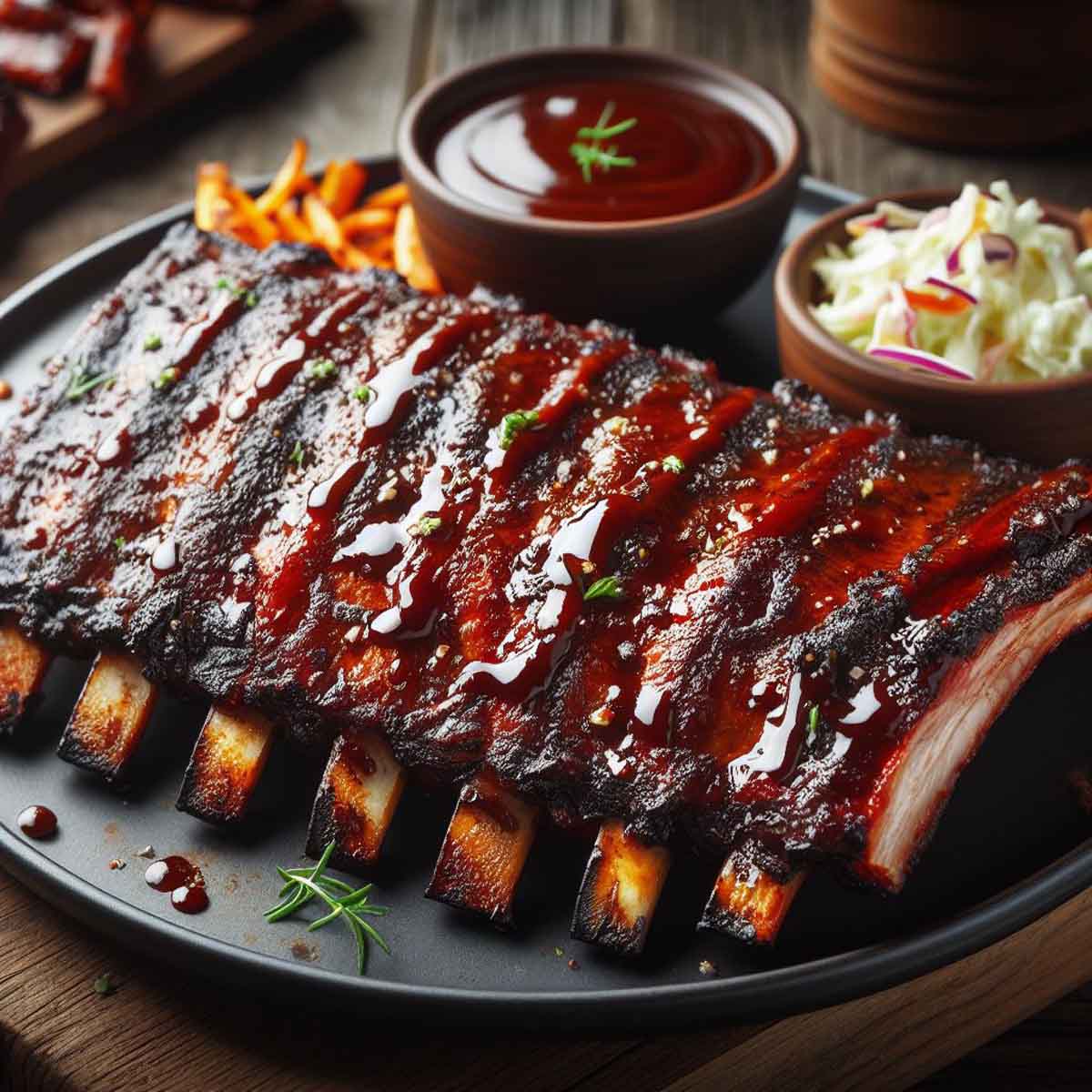
Troubleshooting Common Issues
Even with the best intentions, you might face common freezing issues:
- Freezer Burn: Not eating your ribs for a long time? Check for whitish spots or dry patches—a signal they’ve been frozen too long. While not a safety risk, the affected parts might lose their savory zest.
- Uneven Thawing: To avoid this, always thaw ribs in the fridge where the temperature is consistent, or try the cold water method for quicker, yet still even, thawing.
- Texture Changes: If your ribs do feel a little off post-thaw, a slow cooker can be your ally, tenderizing the meat back to its juicy norm.
Further Reading
Interested in learning more about how to cook those frozen beauties without even thawing? Check out my article, Cooking Frozen Ribs in the Oven, for all the ins and outs you’ll need. It’s a great read full of handy tips on how to go from freezer to oven for those times when the craving for ribs just can’t wait. Happy cooking, and even happier eating!

